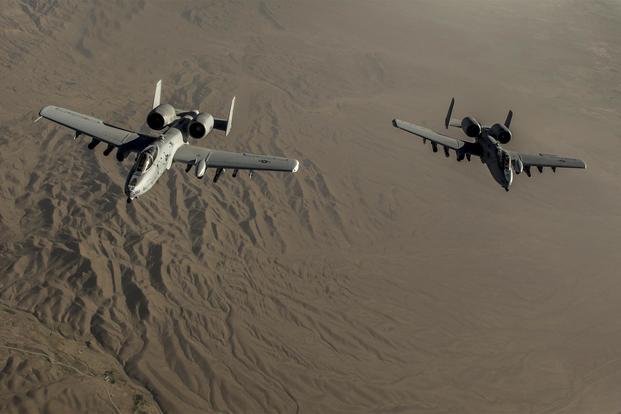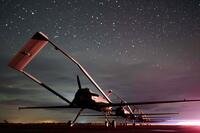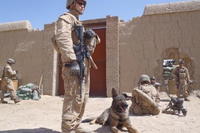A squadron of A-10C Thunderbolt II ground attack aircraft has arrived in Afghanistan in support of the bolstered air campaign against the Taliban and other extremist forces, officials announced Tuesday.
The A-10s, part of the 303rd Expeditionary Fighter Squadron, flew their first mission within 24 hours of landing at Kandahar Airfield, U.S. Central Command said in a release. They arrived over the weekend from Whiteman Air Force Base, Missouri.
The close-air support mission aircraft, commonly known as the Warthog, is part of the latest strategic air campaign to target Taliban revenue sources and counter-terrorism operations, CentCom said.
Operations will also be supported by other aircraft at Kandahar Airfield such as MQ-9 Reapers, which will provide armed overwatch and intelligence, surveillance and reconnaissance, along with HH-60G Pave Hawk helicopters for personnel recovery and search and rescue.
Related content:
- The US Just Flew a Stealth Fighter to Bomb Drug Labs in Afghanistan
- Air Force Adds F-16s, Returns Tankers to Afghanistan, Generals Say
- Air Force's Monthly Bombing Campaign in Afghanistan Hits 5-Year High
They join F-16 Fighting Falcon fighter jets, C-130J Hercules mobility airlift, EC-130H Compass Call electronic attack aircraft, and other planes supporting these operations from Bagram Airfield.
"As we've applied increased pressure on the Taliban and their revenue sources with precision airpower, we've gained considerable momentum in our effort to force them to reconcile or face defeat," said Lt. Gen. Jeffrey Harrigian, U.S. Air Forces Central Command commander.
"As U.S. advisers move closer to the front lines in support of our Afghan partners, this additional airpower will give them the decisive advantage necessary to advance with confidence," he said in the release.
The A-10's mission will increase that lethality, according to Air Force Brig. Gen. Lance Bunch, director of NATO's Resolute Support mission, future operations.
"The A-10 provides planners even more options given its ability to deliver a wide variety of precision munitions and devastating firepower from its 30mm cannon," Bunch said in a separate release.
"In the coming weeks, the A-10's operations will be integrated into our combined U.S. and Afghan air campaign to deliver destructive precision firepower that sends a strong impactful message to the Taliban," he said.
The Air Force began shifting more assets back into the Afghan theater last year.
Air refueling KC-135 Stratotankers returned to Afghanistan for the first time in about five years in September, and the theater welcomed more F-16s to the area of responsibility earlier that summer.
"We just plussed up our number of fighters. We had 12 F-16s; we now have 18," Harrigian told reporters at the Air Force Association's annual Air, Space and Cyber Conference at the time. The general oversees missions at the Combined Air Operations Center at Al Udeid Air Base, Qatar.
"Our close-air support role continues and, as you look at the strategy coming forward, we're actually right now working with [commander of U.S. forces in Afghanistan] Gen. John Nicholson's staff on how to best synchronize his advise-and-assist strategy going forward to optimize the placement of the air assets," he said.
Harrigian said in September the emphasis would be to support ground forces as they position throughout the country, adding he planned to "optimize" drones, such as MQ-9s, for those missions.
Since then, the United States Forces-Afghanistan (USFOR-A) and Afghan National Defense and Security Forces have also taken aim at the Taliban's revenue stream.
More than 30 strikes have been conducted against Taliban narcotics production facilities since November, resulting in more than $20 million lost to the extremist organization, CentCom said.
That month, the Air Force unleashed the F-22 Raptor stealth fighter in Afghanistan for its first operational mission against Taliban drug labs.
The Taliban faces "a more aggressive adversary in this air campaign as U.S. Air Force F-22s, F-16s, B-52s, A-10s and MQ-9s, along with support from Navy F-18s, will join in counter-finance operations," the CentCom release said.
Airstrikes have been and will continue to be on the rise, Operation Freedom's Sentinel and Resolute Support leaders have said.
More than 4,360 weapons were dropped in the country in all of 2017, up from 1,330 the previous year, according to AfCent's latest airpower summary.
"We've used airpower -- dropped more munitions this year than any year since 2012," Nicholson said in November.
The latest realignment of aircraft and airmen in Afghanistan will fall under the geographically separated host unit, the 455th Air Expeditionary Wing, located at Bagram Airfield, the release said.
-- Oriana Pawlyk can be reached at oriana.pawlyk@military.com. Follow her on Twitter at @Oriana0214.










